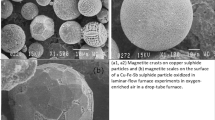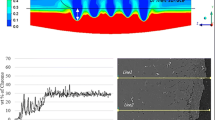Summary
The first flash smelting in Japan began at Ashio Smelter in 1956. Since then many improvements have been made. In 1962, productivity increased three times from the first stage of development. Flash smelting offers great advantages in the use of reaction heat and recovery rate of sulfur, while reducing air pollution. The operating ratio of this smelting process at the early stage of development was not high enough because of problems of high copper loss in the slag, boiler troubles, and damages to refractories. Engineers of Furukawa Company in Ashio Smelter solved these problems one by one, and advised the building of the smelters listed below:
-
Dowa Mining, Kosaka Smelter 1967
-
Nippon Mining, Saganoseki Smelter 1970, 1973
-
Sumitomo Metal Mining, Toyo Smelter 1971
-
Hibi-Kyodo Smelting, Tamano Smelter 1972
-
Nippon Mining, Hitachi Smelter 1972
The productivity of one flash furnace was previously thought to be 5,000 tons per month; now some furnaces produce more than 10,000 tons per month. Such increased productivity is largely due to the refractory structure developed in Ashio.
Similar content being viewed by others
Author information
Authors and Affiliations
Rights and permissions
About this article
Cite this article
Shima, M., Itoh, Y. Refractories of Flash Furnaces in Japan. JOM 32, 12–16 (1980). https://doi.org/10.1007/BF03354575
Published:
Issue Date:
DOI: https://doi.org/10.1007/BF03354575




